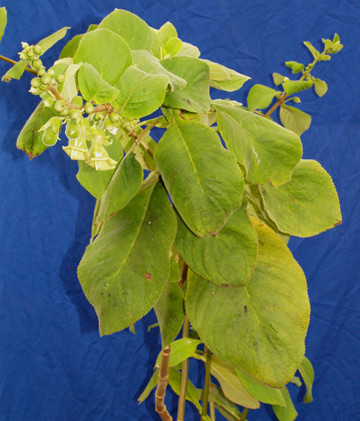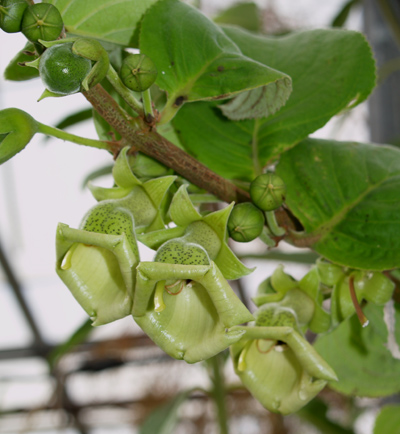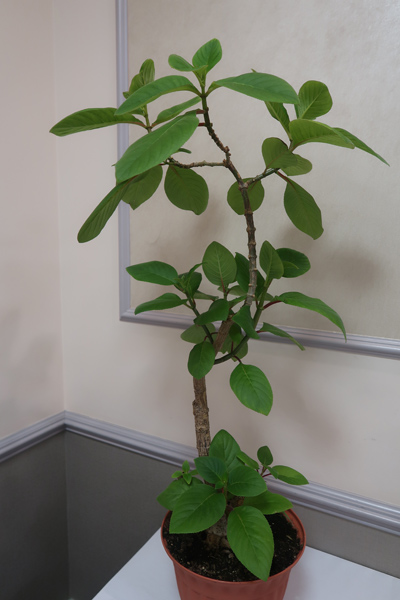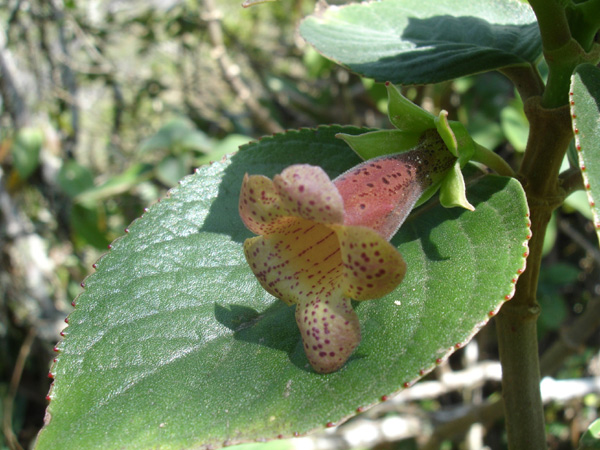Paliavana prasinata
- Saying bad things about this species
- Bats?!?
- Dave Zaitlin's plant
- Hybridization
- Feature table
- External link
- Publication
- Etymology
Calumny, slander, and disrespect
Normally, I hate it when one of my sinningia-alliance plants dies. I made an exception for Paliavana prasinata.
I had a P. prasinata plant for many years and it never bloomed. It took up a lot of space, and required a lot of water even though it was in a big pot. It would usually drop all its leaves every winter. Finally, one winter, it expired altogether.
I don't miss it.
If you have to grow one Paliavana, choose P. gracilis.

Photo by Jon Lindstrom of his plant


